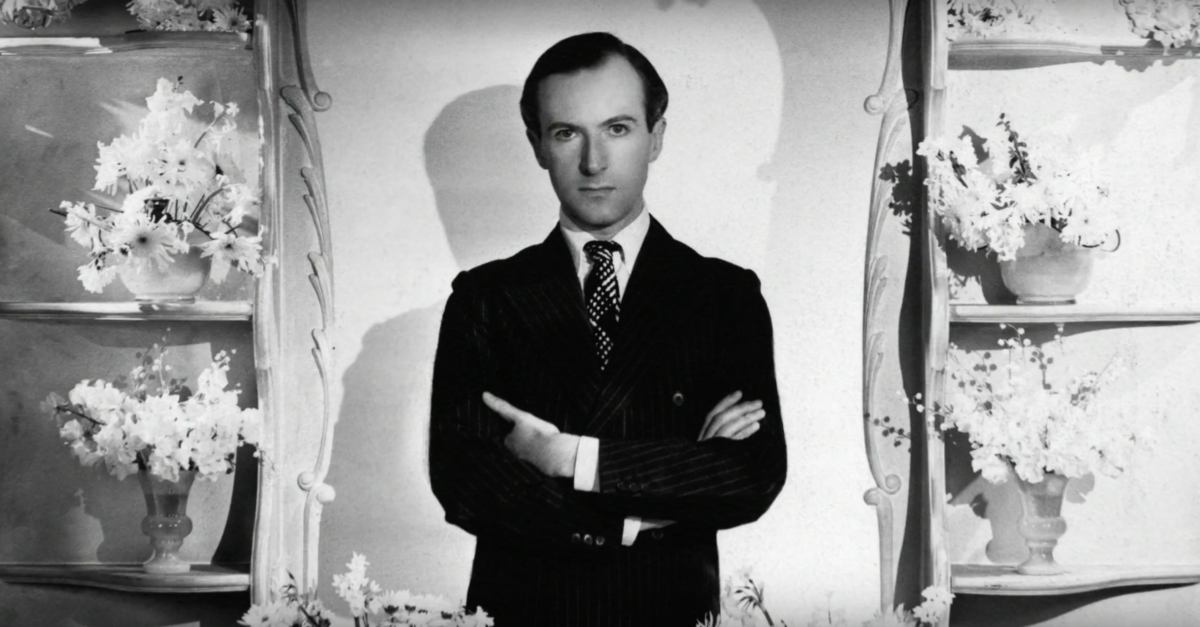
Filmmaker Lisa Immordino Vreeland who has a decidedly inquisitive passion for eccentric ground-breaking icons of style has added a third to her collection, with this rather wonderful profile on the effete English photographer and designer Cecil Beaton. Despite the fact that in his multi-faceted career Beaton won 3 Academy Awards and 4 Tony Awards and was knighted by the Queen after being the Royal Family’s photographer for years, he is mostly forgotten by the general public which hopefully will be corrected now by this new documentary.
Beaton was born in 1904 in London into a wealthy middle-class family. A somewhat precocious child young Cecil took it upon himself to style his two younger sisters and mother and make them pose for him with the Brownie camera he borrowed from his nanny. He took to submitting the photographs to the society page editors of newspapers and magazines often using a pseudonym. It was a taste of his life that would follow.
 These were the days one could buy a place at University, so Beaton went to Cambridge where he proudly boasted he didn’t attend a single lecture. He devoted himself to amateur dramatics where he could dress up in drag and indulge in his own outrageous highly stylized fashion sense, and have the first of a string of male lovers. In the end, he was one of a rare breed who left Cambridge without a degree.
These were the days one could buy a place at University, so Beaton went to Cambridge where he proudly boasted he didn’t attend a single lecture. He devoted himself to amateur dramatics where he could dress up in drag and indulge in his own outrageous highly stylized fashion sense, and have the first of a string of male lovers. In the end, he was one of a rare breed who left Cambridge without a degree.
However, his talents were already showing through. A gifted writer he wrote many diaries throughout his life that were published (and in the film were read perfectly by Rupert Everett). He scored a photography job at Vogue where he really started to make a name for himself with his unique perspective on fashion. However, working for them in N.Y. as one of their top photographers dramatically came to a sudden halt when some anti-Semitic graffiti was included in one of his pieces and the entire edition had of the magazine had to be recalled and shredded, and Beaton fired from his job had to slink back to London.
However, his previous work photographing London society paid off with a summons from Buckingham Palace to photograph the Queen (later known as the Queen Mother). She was so entranced by the results that Beaton became the photographer that the Royal Family relied on for all their major occasions for the next few decades. What was even more remarkable was that Beaton also photographed the Duke & Duchess of Windsor’s wedding who were persona non grata by the Queen and her family, yet it didn’t effect Beaton’s position at the Palace.
 Vreeland was fortunate enough to be able to include wonderful archival footage of Beaton himself from several points throughout his life, which confirmed the great man’s restless and frustration with not being to do everything he wanted too. He had this remarkable witty talent which shines through all examples of the work in the documentary, but he self-questions it, wondering if he would have been better on focusing on just one specific field.
Vreeland was fortunate enough to be able to include wonderful archival footage of Beaton himself from several points throughout his life, which confirmed the great man’s restless and frustration with not being to do everything he wanted too. He had this remarkable witty talent which shines through all examples of the work in the documentary, but he self-questions it, wondering if he would have been better on focusing on just one specific field.
The only other area where he could be confused and conflicted was his questionable choice of lovers which from all accounts left him in the end quite unfulfilled romantically. There is also mention of the famous rumor that not only did he take photographs of the reclusive Greta Garbo, but that at one time, he was her lover too.
Beaton said that he never ever wanted to be just an ordinary, anonymous person, and reviewing his life no-one could ever accuse him of being anything like that. As well as his astonishing legacy such as the costumes and sets for My Fair Lady, for which he won two Academy Awards, there is also Beaton the outrageous and quintessential English snob that was always the center of attention wherever he went. His is maybe a style that is long gone, but it so deserves never to be forgotten.

